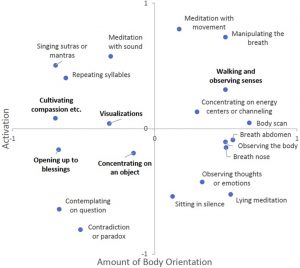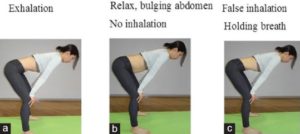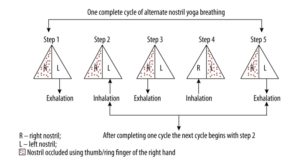Improve Memory with Brief Breath Awareness Practice
By John M. de Castro, Ph.D.
“Our in-breath is like a remote control for our brains, directly affecting electrical signals that communicate with memory and emotional processing centers.” – Crystal Goh
Breathing is essential for life and generally occurs automatically. It’s easy to take for granted as it’s been there our entire lives. Nevertheless, we become more aware of it when it varies with circumstances, such as when we exercise and also in emotional states, especially fear and anxiety. But we rarely notice it during everyday ongoing life. Yet, its characteristics are associated with our state of well-being. Slow deep breathing is characteristic of a healthy relaxed state. Breathing exercises are common in yoga practices and have been found to have a number of beneficial effects. There are a number of breathing exercises and there is a need to identify the psychological effects of each.
In today’s Research News article “Performance in a Corsi Block-tapping Task following High-frequency Yoga Breathing or Breath Awareness.” (See summary below or view the full text of the study at: https://www.ncbi.nlm.nih.gov/pmc/articles/PMC6746049/), Gupta and colleagues recruited young (aged 18-24 years) volunteers who had at least 3 months of experience with yogic breathing techniques. They were randomly assigned to different orders of 3 conditions; high frequency yogic breathing, breath awareness, or quiet sitting. The conditions occurred in 5-minute blocks separated by 1-minute rest.
Memory was measured with a Corsi Blocks task in which nine blue squares are presented and then each square changes to yellow in a random sequence. The participants task is to reproduce the sequence in either forward or backward order. The number of blocks changing color began at 2 and increased to 9. The task was terminated when the participant failed twice to reproduce the order of a particular size.
They found that neither the high frequency yogic breathing nor the quiet sitting produced a significant change in performance on the Corsi Blocks task. On the other hand, after the breath awareness condition there was a significant improvement in the backward order scores.
The study involves only an extremely brief task. It cannot be concluded that breath awareness would have any lasting effect or that training in breath awareness over time would produce lasting memory improvement. Nevertheless, these results suggest that a brief breath awareness practice improves memory ability immediately afterward.
So, improve memory with brief breath awareness practice.
“Don’t try to control your breath. Simply watch it. Fast or slow, shallow or deep, the nature of the breath does not matter. Your full attention to it is what counts.” – Ram Dass
CMCS – Center for Mindfulness and Contemplative Studies
This and other Contemplative Studies posts are also available on Google+ https://plus.google.com/106784388191201299496/posts and on Twitter @MindfulResearch
Study Summary
Gupta, R. K., Agnihotri, S., Telles, S., & Balkrishna, A. (2019). Performance in a Corsi Block-tapping Task following High-frequency Yoga Breathing or Breath Awareness. International journal of yoga, 12(3), 247–251. doi:10.4103/ijoy.IJOY_55_18
Abstract
Background:
Uninostril yoga breathing practices have improved spatial memory scores. There has been no assessment on the effect of high-frequency yoga breathing (HFYB) on working memory and spatial memory scores using the Corsi block-tapping task (CBTT).
Objectives:
The present study was planned to assess the immediate effects of HFYB and breath awareness (BAW) compared to a control session on performance in a CBTT.
Methods:
Fifteen participants of both sexes with ages between 18 and 24 years (group mean age ± standard deviation, 20.0 ± 1.6 years; 10 females) were recruited for the trial from a university in North India. Each participant was assessed in three sessions conducted on 3 separate days at the same time of the day. The three sessions were (i) HFYB, (ii) BAW, and (iii) quiet sitting (QS). The duration of the intervention was 18 min. The participants were assessed before and after all the three sessions. Repeated-measures-analyses of variance followed by post hoc tests with Bonferroni adjustment were performed to compare data before and after all the three sessions.
Results:
BAW resulted in an improvement in backward total scores (P < 0.05) and the backward Corsi span (P < 0.05; one tailed).
Conclusions:
The results suggest that BAW improves primary working memory, spatial memory, and spatial attention. HFYB did not cause any change.
https://www.ncbi.nlm.nih.gov/pmc/articles/PMC6746049/









